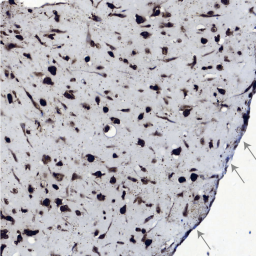A three-dimensional model to study human synovial pathology
Main Article Content
Abstract
Therapeutic agents that are used by patients with rheumatic and musculoskeletal diseases were originally developed and tested in animal models, and although retrospective studies show that these models have limited predictive value, their use has continued because of a lack of good in vitro alternatives. In this study, we developed a 3-dimensional synovial membrane model made of either human primary synovial cell suspensions or a mix of primary fibroblast-like synoviocytes and CD14+ mononuclear cells. We analyzed the composition of the mature micromasses by immunohistochemical staining and flow cytometry and showed that the outer surface forms a lining layer consisting of fibroblast-like and macrophage-like cells, reflecting the in vivo naïve synovial membrane. To model the affected synovial membrane in rheumatoid arthritis (RA), micromasses were exposed to the pro-inflammatory cytokine tumor necrosis factor alpha (TNF-α), which led to increased pro-inflammatory cytokine expression and production, and to hyperplasia of the membrane. To recreate the synovial membrane in osteoarthritis (OA), the micromasses were exposed to transforming growth factor beta (TGF-β), which led to fibrosis-like changes of the membrane, including increased alpha smooth muscle actin (α-SMA) and increased expression of fibrosis-related genes PLOD2 and COL1A1. Interestingly, the macrophages in the micromasses showed phenotypic plasticity, as prolonged TNF-α or TGF-β stimulation strongly reduced the occurrence of CD163+ M2-like macrophages. We show the plasticity of the micromasses as a synovial model for studying RA and OA pathology and propose that the synovial lining micromass system can be a good alternative for drug testing.
Article Details
Articles are distributed under the terms of the Creative Commons Attribution 4.0 International license (http://creativecommons.org/licenses/by/4.0/), which permits unrestricted use, distribution and reproduction in any medium, provided the original work is appropriately cited (CC-BY). Copyright on any article in ALTEX is retained by the author(s).


